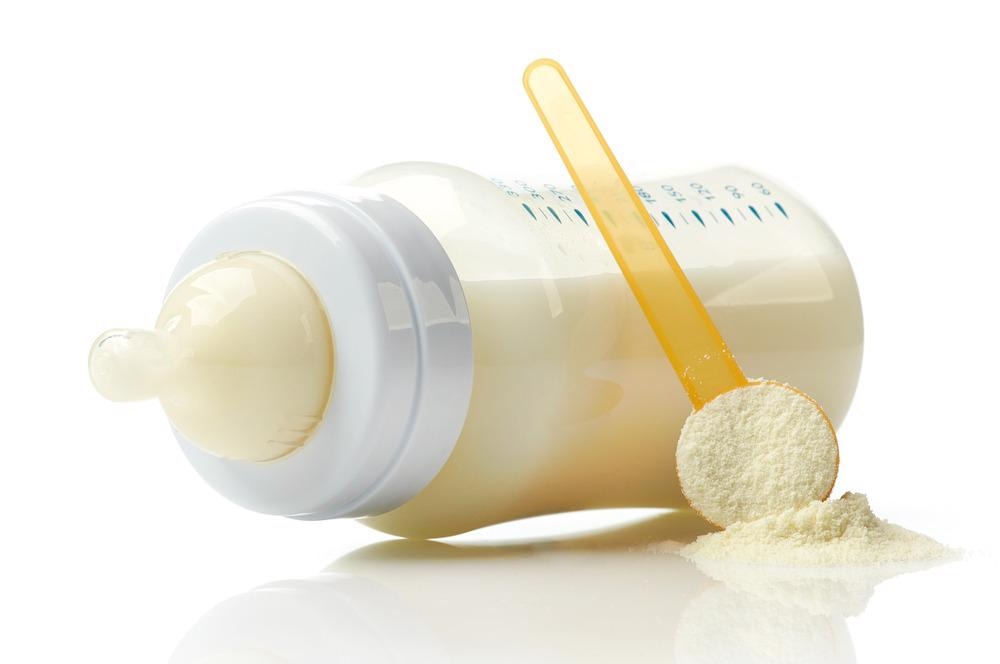In a recent Journal of Pediatric Gastroenterology and Nutrition study, researchers discuss the results of a randomized and double-blind trial to study the growth-promoting efficacy and safety parameters of a goat milk-based formulation in infants.

Study: Goat milk based infant formula in newborns: A double-blind randomized controlled trial on growth and safety. Image Credit: MaraZe / Shutterstock.com
Background
Human breast milk is considered to be the best source of nutrition for infants. However, if the supply of breast milk is inadequate, pediatricians recommend alternative formulations to maintain optimal growth patterns in infants. Cow milk-based formulations are most commonly used as an alternative source of nutrition in infants.
Although relatively uncommon, goat milk-based formulations have been shown to provide adequate growth in infants. These formulations have been authorized by the World Health Organization (WHO) and European Food Safety Authority. However, previous investigations on goat milk-based formations have several limitations, including small sample size, observational study design, or non-exclusive feeding of goat milk-based formations.
In the current randomized controlled, multi-center trial, scientists discuss the growth and safety parameters in infants exclusively consuming either goat milk-based or cow milk-based formulas.
Study design
The trial enrolled a total of 218 healthy infants up to 14 days of age from 25 European study centers. The infants were randomly categorized into either the goat milk formulation-fed group or the cow milk formulation-fed group.
The growth parameters including body weight, height, and head circumference were studied at baseline and at 14, 28, 56, 84, and 112 days of intervention. The safety and tolerability of the formulations were assessed by recording adverse events, stool characteristics, reflux, fussiness, colic, flatulence, and medication use.
The analysis of efficacy and safety profiles of the goat milk-based formation was conducted by considering cow milk-based formulation as control and breast milk as a reference.
Important observations
The infants belonging to both the goat milk formulation and cow milk formation groups showed similar baseline characteristics. As compared to mothers in the formulation groups, breastfeeding mothers had higher educational levels and lower smoking rates before and during pregnancy. The infants who consumed breast milk were older than those fed with either formulation.
The estimated formulation intake was compared with the recommended intake to determine compliance with the intervention. The findings revealed comparable compliance between the two formulation groups. Similarly, a comparable calorie intake was observed in both groups at all time points.
After a 112-day trial period, the average body weights of goat milk formulation-fed, cow milk formulation-fed, and breast milk-fed infants were 7,009, 6,781, and 6,449 grams, respectively. Considering the baseline weight of infants, the analysis revealed comparable weight gain in both formulation groups.
As compared to the infants who consumed breast milk, formulation-fed infants showed significantly higher weight gain 84 days onwards. However, no significant differences in length and head circumference were observed between the groups.
Safety parameters
The incidence of serious adverse events was low in all study groups. As compared to the cow milk formulation group, the goat milk formulation group showed a lower risk of serious adverse events.
A significantly lower risk of adverse events was observed in the goat formulation group as compared to that in the breastfeeding group. However, the risk was similar between both formulation groups. The most common adverse events observed in all study groups included gastrointestinal disorders, infections, and infestations, as well as skin and subcutaneous tissue disorders.
A comparable incidence rate of tolerability symptoms including reflux, colic, fussiness, and flatulence was observed in both formulation groups. During the entire study period, no incidence of blood-stained stool was observed in the three study groups.
Study significance
The study findings indicate that the improvement in body weight, height, and head circumference among infants exclusively consuming goat milk-based formulations is equivalent to that observed in infants exclusively consuming cow milk-based formulations. Infants from both groups demonstrated a similar level of tolerability to the formulations. Overall, the study highlights that goat milk-based formulations provide adequate growth and are safe for use in infants.
Conflicts of Interest
The authors FW, TH, LL, and AH are employed at Ausnutria B.V., which manufactured the goat milk formula used in the study. HJV serves on the scientific advisory board for Ausnutria B.V.. FP declared no conflict of interest.
Journal reference:
- He, T., Woudstra, F., Panzer, F., et al. (2022). Goat milk based infant formula in newborns: A double-blind randomized controlled trial on growth and safety. Journal of Pediatric Gastroenterology and Nutrition. doi:10.1097/MPG.0000000000003493.